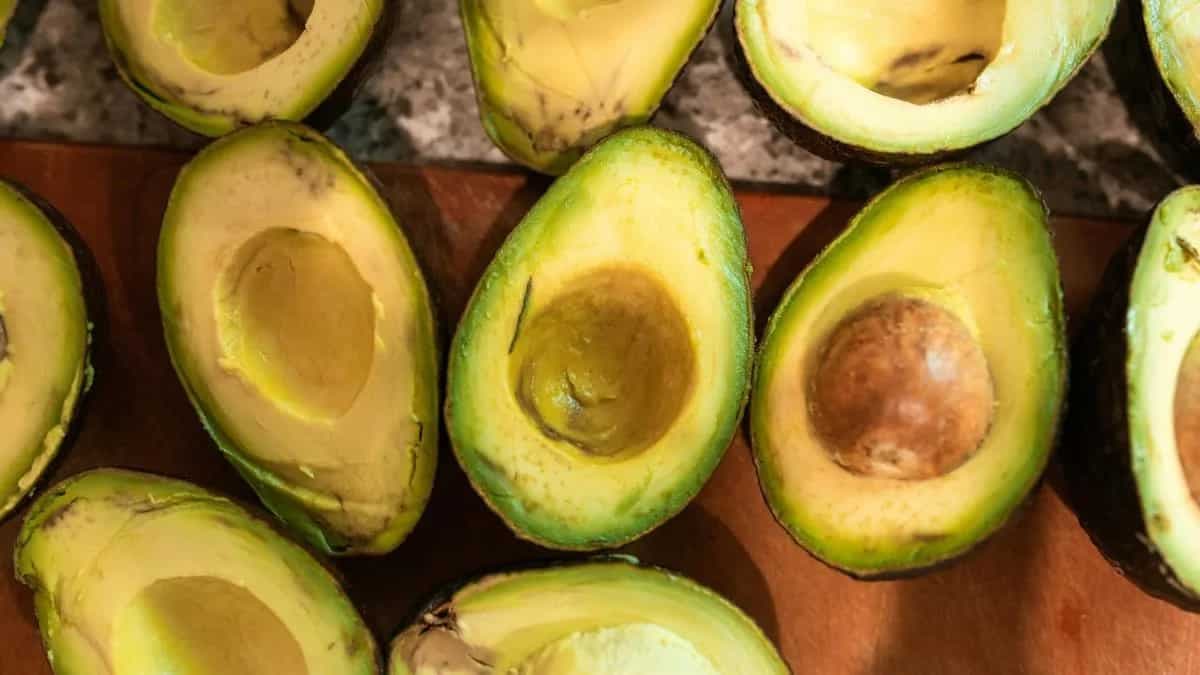The internet is full of tips and tricks to execute in order to get the perfectly ripe avocados and yet, there are days when the fruit is cut too prematurely or just a bit later than usual. Wastage aside, paying a pretty penny for them does hurt the pocket when one is unable to enjoy it at its peak ripeness - making it a disappointing experience. That said, following easy visual and sensory cues are perhaps the only way to understand and sense the level of ripeness the fruit has reached, without having to cut it open or bruising its delicate cover. Sometimes when avocados are harvested before their time, the fruit might take longer to ripen than usual and at times, the fruit might need not more than a day or two since the time of purchase to be ideal for use.
Refrain From Applying Pressure At The Grocers
When faced with a pile of avocados, the natural instinct is to squeeze the fruit as a way to check and pick the ones which are likely to ripen soon. However, given their delicate character, chances are that too much force might bruise the exterior, making it non-palatable or purchase worthy for another customer. Hence, it is ideal to always check with a store assistant to help pick fruit with a certain level of doneness - as opposed to doing it oneself and ending up with unfavourable results.
Buy Unripe Fruit
At times, buying avocados that are already ripe might conceal internal bruises which aren’t visible to the naked eye - resulting in an unjustification of the price one pays as well as leading to discarding some part of the fruit. When bought in its unripe form, chances of such damage are almost negligent and enables the individual to closely monitor the fruit until it reaches peak ripeness - without feeling the need to throw away any unpleasant bits.
Also Read:
Squeeze Surface Gently
Placing the avocado in one’s palm and applying a slight pressure is all one usually needs as a way to test for ripeness. Avoid using fingers as nails or fingertips could easily tear open the skin or end up creating a dent, pressing the flesh inwards - thus causing decay. To abstain from this, it is also advisable to notice the dot-like bit on top of the fruit to see if it has browned or check if the colour of the skin has changed since it was purchased, before touching it.
Do Not Rush Ripening

Image Credits: Unsplash
Contrary to nifty hacks which might indicate placing the fruit alongside bananas or in paper bags, it is always better to let patience do the trick. Meal plan or menu plan a little ahead of time so as to give the fruit enough time to ripen at leisure. Once the fruit has been off the tree for weeks, it is hard to say that any methods might be reliable or good enough to accelerate the process.
Cut Fruit Continues Ripening
Irrespective of whether the fruit has been cut or uncut, avocados continue to ripen to reach peak flavour similar to when they might be cut open when ripe. Since they are climeteric fruits that produce ethylene, the phenomenon continues to drive the process despite the fruit being cut. This is also valid since ripened avocados continue to oxidise if not treated with adequate citrus, salt and oil. Proper storage (read: inexposure to direct air) is advisable if an avocado has been cut too soon, for them to turn creamy and delicious.
Refrigerate Briefly
If one is able to anticipate when an avocado can ripen but needs to prolong it slightly, a great way to do so is by refrigerating the fruit. Lower temperature for a limited period of time is conducive to preserving their ripeness. However, storing them for longer periods in the refrigerator might lead to ‘chill injury’ - which leads to the fruit having mushy, grey flesh that is unfit for consumption. Ideally, treat the ripened avocado with citrus juice and salt before storing it in an air-tight container.


